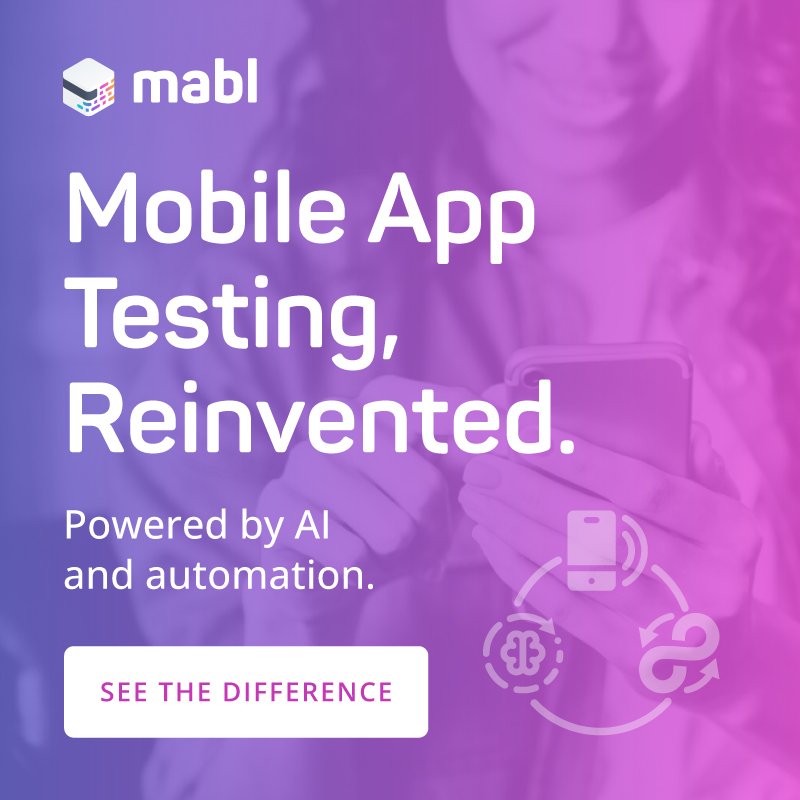Apps that Stick: A 29 Step Plan for a Killer Launch
Thursday, June 18, 2015

|
Matthew Cordasco |
Hey while you’re chugging that beer Friday back you may want to think about this head-spinning number: To date App Store developers have earned a cumulative $25 billion from the sale of apps and games.
That a big pie, do you have what it takes to get your proper slice?
Also, there’s a science to coding an app and there is definitely a science to marketing apps. Finding your brand identity, target audience and overall voice are basics in any new product. Just as critical, the instant gratification culture that we live in also demands an approach of precision when launching an app. And there’s a balancing act of audience guidance and freedom that is required to make a well-received app.
Do this right and there could be riches ahead. Do this wrong and back to the drawing board we go.
With that in mind here’s a 29 step plan that’ll take you straight to app development heaven:
1. Focusing on a Direction
When it comes to launching a new app, the last thing you want is a case of multiple personalities. Figuring out a solid voice for your brand will allow you to make easier decisions down the line.
2. Pick a name people will remember
Keep it simple. You want a name that pops to your customers, but also gives them an idea of what your app is about. App Developer Apadmi advises to avoid using words that are trade marked and names that are merely “knock offs” of your competitors.
3. Get the ball rolling
The hardest part of any creative process is getting started. While you don’t want to rush in without a clear game plan, you don’t want to wait too long and risk the chance that someone else in this very competitive market might have the same idea as you. Salesforce Partners advise to “Research the market and the customers’ needs as much as you can, but execute quickly and continue to gather information to make it perfect as you move.”
4. Get the word out ASAP
You’re going to want to drum up interest in your app once it’s hit the market, so why not hit the ground running? Make a press kit and tell your story – putting a face on the creative process as it is occurring is a great way to build relationships with press/bloggers when your app is live.
5. Choose your medium
Where do you want your app to debut? iPhone or Android? While it will of course depend on your target audience, iPhone is generally a safer bet for the first run. There are countless different Android devices with varying hardware and software options, whereas Apple is more streamlined. If you have to choose, Apple is the safer bet. As your app grows you can expand to the Android market.
6. Developer state of mind
When envisioning the layout of your app it is important to think how your developer will code it. According to tech entrepreneur Lindsey Witmer Collins, code is “a series of ‘ifs’ and ‘thens’…You want to minimize the amount of times you need to say ‘if’ ‘then’ and ‘except when’ when describing how your app will work.” As you will read over and over again, simple is better.
7. Keyword importance
Choosing your keywords is just as essential, if not more so than choosing your category. Your keywords are going to be how your audience finds your online or on the app store. Apadmi suggests that to be more visible, it’s best to use keywords that will be less competitive and should regularly change with app updates.
8. Hire Developers
If you’re going to build a successful app, you’re going to need a strong foundation of developers at the helm. Salesforce Partners say a new company should anticipate growth and hire for where business will be in 12 to 18 months, not where it is today.
9. Be careful who you choose
Lindsey Witmer Collins says that there are two types of developers you should be looking out for: The overambitious and the overrated. The overambitious might try to add things to your vision that might seem excessive. The overrated might try to squeeze more out of you than what you are offering. Witmer Collins suggests keeping in mind the type of developer you had in mind when you mapped out your app.
10. Craft a straightforward yet thorough description
This is the sales pitch. This is where you tell your audience why they need this app. You should have a short version of the description that gives a quick snapshot of what your app does, and a longer version that earns your customers trust. Allow for testimonials, feedback and suggestions.
11. Keep it simple
Simplicity is essential – don’t try and reinvent the wheel. Your consumer wants to operate within a frame that they are familiar with. Forbes noted that one of the reasons that the Starbucks app became as successful as it is was because it was compatible with already existing POS systems in every Starbucks.
12. Quick and to the point
Though apps like Angry Birds have things in common with them, apps are not video games. Video games generally require a lot of long-duration time investment. Unlike video games, successful apps are accessible for short bursts of user activity.
13. MVP
In line with simplicity is the MVP or Minimum Viable Product rule. Lindsey Witmer Collins says your first release should be “a very minimal version of what you actually envision as your final product while still achieving your end goal.” This gives you room to build and correct flaws in the future.
14. Monetization
There will be a point when you will have to decide if you’re going to charge for your app or keep it free. When your app is free, you make revenue from renting out ad space. Your other options are selling the app at a fixed price or selling in-app purchases. If you make a free app addicting enough, your users might be willing to pay for extra features.
15. Don’t underestimate the power of App Store reviews
Reviews get you listed on the App Store, and getting listed on the App Store gets you visibility. The first five reviews you receive can make or break you. It’s important to encourage users to give reviews, but you have to be strategic in asking. Also, very important: you CANNOT offer incentives for positive reviews. It is against Apple and Google’s rules and could lead to you getting the boot.
16. Testing, testing, testing
QA testing out your app before putting it on the market is of course key, but the testing doesn’t stop there. As you add to your app you need to continue to ensure that it is the highest quality product you can produce. It is also important to take those customer reviews seriously. “One bug or crash can send users deleting your app and writing bad reviews in a heartbeat, bringing down the whole thing,” MobileSmith Marketing Administrator Cory Fogg says.
17. Prepare for costs
This should be a no-brainer: You’ve got to spend money to make money. You’re going to have to take in to account all of the expenses when mapping out your app budget. According to TechCrunch, the average cost to develop an app is $6,453. Smaller apps can range from $3,000 – $8,000 and more complex apps can go from $50,000 –$150,000.
18. Allow for customer personalization
Facebook, Twitter, Instagram; we are a society that likes to put our face on something as a consumer. Allowing your users to customize profiles, backgrounds, icons etc. will make them feel more actively involved. Better yet if you can integrate it with their social media.
19. Rewards and Loyalty
Let’s go back to Starbucks for a second. You register your Starbucks card online. You get a “star” for every purchase you make. You get 30 stars and you’re a “gold member.” After that you get a free drink or food item for every 12 stars. Whatever your app is, rewarding users for particular actions can increase app usage. Push notifications can help remind users to come back to the app to obtain rewards. But be careful not to get too excessive with those, or your app might get uninstalled.
20. Getting to the press
Earlier we mentioned how it was important to use your story as a way to potentially build relationships with journalists/bloggers. If there aren’t any relationships formed yet, you’re going to need an angle to pitch yourself to reviewers. According to Apadmi, one easy way to solicit coverage is to Google terms like “best ______ apps 2013. ”Find an author who might not have updated their content for this year and pitch your app.
21. Newsjacking
Newsjacking is a form of PR that allows you to promote your app/business by taking advantage of current events in the news. Releasing timely apps or add-ons to your current app will link awareness from the headlines to your app.
22. Partner up
When seeking to gain exposure, never be afraid to look for outside help; there will be others in your exact position that are looking for a leg up on the competition. Find apps that share similar audiences and interests with yours (that aren’t competitors) and cross-promote each other’s apps to your users. Other partnerships to consider are with leaders of various university organizations and communities.
23. Paid Advertising
With paid advertising, you can go the route of banner ads within apps, interactive ads within apps and social media. Just like your push notifications though, you don’t want to be too overzealous with your ads. You should strategize your paid advertising dates and implement in them in quick and effective spurts. The holidays are a perfect time for this, as many people are getting new phones and looking for apps.
24. Social Media Initiatives
Get the word out there on every available social media site: Facebook, Twitter, Instagram, Pinterest, etc. You know them all; now use them for your app! Promoting these pages and the app itself with your personal social media profiles will help as well.
25. Analytics
Forbes encourages developers to track and measure everything that happens inside your app. It is important to know the habits of long-term users and what percentage of users become paid users. Some popular in-app analytics include Artisan, Flurry and Google Mobile App Analytics.
26. The Business of Apps
The realm of app developing is relatively new, but it’s important to remember that it is a business. So it is important to keep that business mindset and be proactive about building your brand. Brand dignity Managing Director Maciej FitaI firmly believes this, saying “Whether the goal is monetary or market share there is a transaction being done by means of downloads. This means you have to approach your app like a business and conduct proactive branding to build its visibility and fan base.”
27. Content Creation
Take advantage of your app’s category and provide different forms of related content for your users. Create a blog or utilize social media to keep your users engaged with something other than your app. Apadmi recommends going easy on the self-promotion with related blogs. Give your users advice they will appreciate.
28. Promote your app in every single possible way
There are so many lines of communication via our phones and the internet. Make sure that you take advantage of every one of them to get the word out. Rahul Varshneva, Co-founder of Arkenea LLC suggests things like changing the signature of your email, customizing your voicemail and even starting a podcast for your app.
29. Make your app fun!
This is something that should probably be at the top of the list, but it’s also a good way to close it all out. As mentioned earlier, you need to consider your app as a business first and foremost. But along with your app’s primary function, you should ensure that it is enjoyable for your users; otherwise, why are they going to keep coming back?
Read more: https://mycrowd.com/
This content is made possible by a guest author, or sponsor; it is not written by and does not necessarily reflect the views of App Developer Magazine's editorial staff.

Become a subscriber of App Developer Magazine for just $5.99 a month and take advantage of all these perks.
MEMBERS GET ACCESS TO
- - Exclusive content from leaders in the industry
- - Q&A articles from industry leaders
- - Tips and tricks from the most successful developers weekly
- - Monthly issues, including all 90+ back-issues since 2012
- - Event discounts and early-bird signups
- - Gain insight from top achievers in the app store
- - Learn what tools to use, what SDK's to use, and more
Subscribe here














